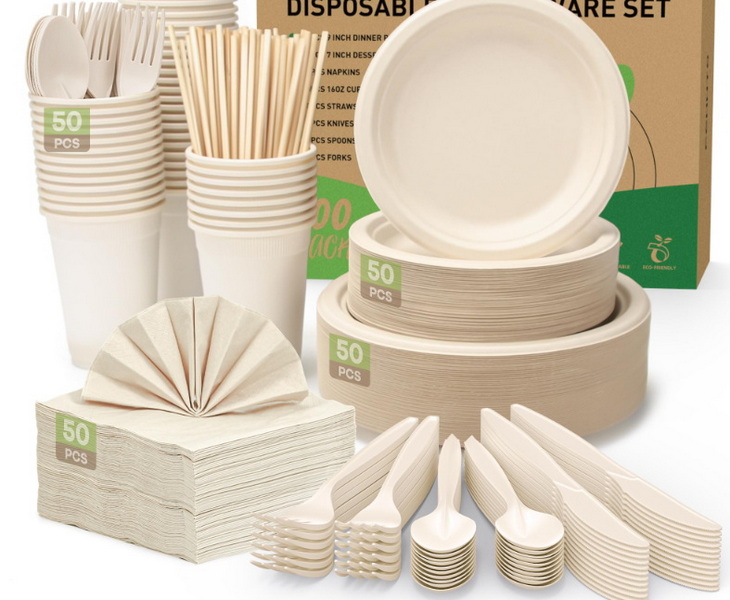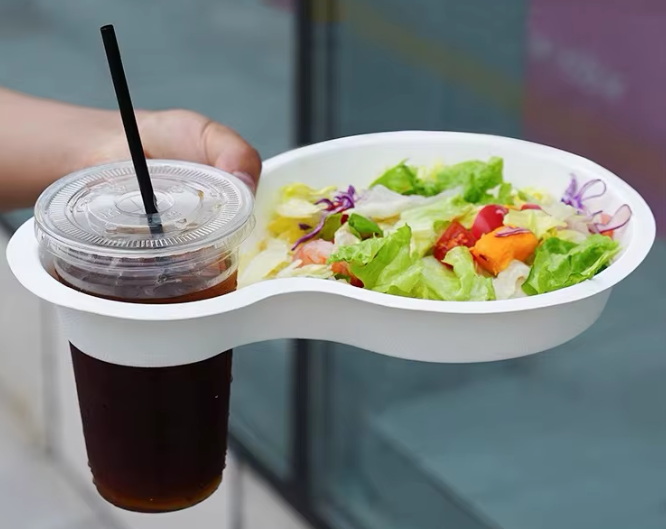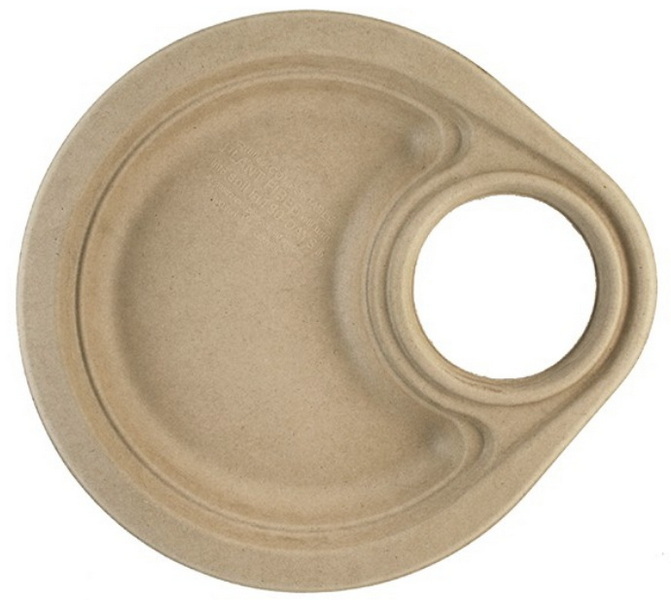
Content Menu
● Understanding Disposable Plates with Cup Holders
>> What Are Disposable Plates with Cup Holders?
>> Materials Used in Production
● The Environmental Impact of Disposable Plates
>> Plastic Pollution Crisis
>> Benefits of Compostable Materials
● Consumer Preferences and Market Trends
>> Growing Demand for Eco-Friendly Options
>> Regulatory Changes
● Advantages of Using Disposable Plates with Cup Holders
● Challenges Facing Eco-Friendly Disposable Plates
● Innovations in Eco-Friendly Disposable Tableware
● Conclusion
● FAQ
>> 1. What materials are used in eco-friendly disposable plates?
>> 2. How long do biodegradable plates take to decompose?
>> 3. Are there any regulations regarding single-use plastics?
>> 4. Can I use biodegradable plates for hot foods?
>> 5. Where can I buy disposable plates with cup holders?
● Citations:
In recent years, the conversation around disposable tableware has shifted significantly, especially concerning environmental sustainability. With the growing awareness of plastic pollution and the detrimental effects of single-use products on our planet, many consumers are seeking alternatives that are both convenient and eco-friendly. Among these alternatives, disposable plates with cup holders have gained popularity. This article delves into whether these products can genuinely be considered eco-friendly, examining their materials, production processes, and overall impact on the environment.

Understanding Disposable Plates with Cup Holders
What Are Disposable Plates with Cup Holders?
Disposable plates with cup holders are designed to provide convenience during social gatherings, events, or picnics. The integrated cup holder allows users to carry both food and beverages simultaneously, making them particularly useful in settings where mobility is essential. This design innovation reflects a growing trend toward multifunctional products that enhance user experience while promoting sustainability.
Materials Used in Production
The environmental impact of disposable plates largely depends on the materials from which they are made. Traditional disposable plates are often crafted from plastic or foam, which can take hundreds of years to decompose. In contrast, many modern disposable plates with cup holders are made from more sustainable materials such as:
- Bamboo: A fast-growing plant that is renewable and biodegradable. Bamboo plates are lightweight yet sturdy, making them suitable for various foods.
- Sugarcane Bagasse: A byproduct of sugar production that is compostable and does not require deforestation. These plates can decompose within 30 to 90 days in a composting environment.
- Wheat Straw: Another agricultural byproduct that can be turned into biodegradable plates. Wheat straw products are durable and can handle both hot and cold foods effectively.
- Cornstarch: Used to create polylactic acid (PLA), a compostable plastic that can break down within months in industrial composting facilities. Cornstarch-based products are non-toxic but may have limitations regarding heat resistance.
These materials not only offer a more eco-friendly alternative but also contribute to reducing waste in landfills.
The Environmental Impact of Disposable Plates
Plastic Pollution Crisis
The widespread use of plastic disposable tableware has led to a significant increase in plastic pollution. According to studies, plastic products can take up to 1,000 years to decompose in landfills, releasing harmful chemicals into the soil and water during their breakdown process. This pollution poses a severe threat to wildlife and ecosystems. For instance, over 8 million tons of plastic end up in the oceans each year, affecting marine life through ingestion or entanglement[4].
Benefits of Compostable Materials
Switching to compostable materials significantly reduces the environmental footprint of disposable plates. For instance, plates made from bamboo or sugarcane bagasse can decompose within months in a commercial composting facility. This rapid decomposition helps divert waste from landfills and reduces greenhouse gas emissions associated with waste management.
Moreover, using biodegradable materials contributes to a circular economy by ensuring that resources are returned to the environment rather than accumulating as waste[3]. This approach aligns with global sustainability goals aimed at reducing reliance on fossil fuels and minimizing ecological footprints.

Consumer Preferences and Market Trends
Growing Demand for Eco-Friendly Options
As consumers become more environmentally conscious, there is an increasing demand for eco-friendly disposable tableware. Many companies are responding by offering products made from sustainable materials. For example, brands like World Centric and Green Sapling provide disposable plates that are certified compostable and made from renewable resources[5].
This shift in consumer preferences is evident across various sectors, including food service, hospitality, and retail. Notably, the global biodegradable disposable tableware market showcased growth at a compound annual growth rate (CAGR) of 10.79% during 2020-2023[5].
Regulatory Changes
Governments worldwide are also taking steps to address the environmental impact of single-use plastics. Many regions have implemented bans on certain types of plastic tableware, promoting the use of biodegradable alternatives instead. For instance, cities like San Francisco have banned plastic straws and stirrers while encouraging businesses to adopt eco-friendly practices[6]. This regulatory shift encourages consumers to seek out sustainable options like disposable plates with cup holders.
Advantages of Using Disposable Plates with Cup Holders
- Convenience: These plates allow users to hold food and drinks simultaneously without needing additional hands or utensils. This feature is particularly beneficial at outdoor events or parties where guests may need to navigate crowded spaces.
- Reduced Waste: By using compostable materials, these products help minimize waste accumulation in landfills. As more consumers choose biodegradable options, the overall volume of waste generated from single-use items can decrease significantly.
- Versatility: They can be used for various occasions, including parties, picnics, and outdoor events. Their design accommodates different types of food and beverages, making them suitable for diverse culinary experiences.
- Health Benefits: Many eco-friendly disposable plates are free from harmful chemicals such as bisphenol-A (BPA), ensuring a safer dining experience for consumers[7]. This aspect is particularly important as awareness grows regarding the health risks associated with traditional plastics.
Challenges Facing Eco-Friendly Disposable Plates
Despite their benefits, there are still challenges associated with eco-friendly disposable plates:
- Cost: Sustainable options can be more expensive than traditional plastic or foam plates. This higher price point may deter some consumers from making the switch; however, many are willing to pay a premium for environmentally responsible products.
- Availability: Not all regions have access to composting facilities capable of processing biodegradable materials effectively. This limitation can hinder the widespread adoption of eco-friendly options.
- Consumer Awareness: Many consumers may not fully understand the benefits of using eco-friendly products or may be unaware of the available options. Educational campaigns highlighting the importance of sustainability can help bridge this knowledge gap.
Innovations in Eco-Friendly Disposable Tableware
The market for disposable plates with cup holders continues to evolve as manufacturers innovate new designs and materials:
- Plant-Based Coatings: Some manufacturers are developing plant-based coatings that enhance the durability of biodegradable plates without compromising their compostability[2]. These coatings allow for better moisture resistance while maintaining an eco-friendly profile.
- Customizable Designs: Brands are increasingly offering customizable options for businesses looking to promote their brand while using sustainable products. Custom printing on biodegradable plates allows companies to showcase their commitment to sustainability while enhancing their marketing efforts.
- Educational Initiatives: Companies are also investing in educational initiatives aimed at informing consumers about proper disposal methods for biodegradable products. Clear labeling on packaging helps guide users toward appropriate composting practices[1].
Conclusion
In conclusion, disposable plates with cup holders can be eco-friendly if they are made from sustainable materials such as bamboo or sugarcane bagasse. While traditional plastic options contribute significantly to environmental degradation, these modern alternatives offer a practical solution without compromising ecological integrity. As consumer demand for sustainable products continues to grow and regulations shift towards reducing single-use plastics, disposable plates with cup holders represent a step in the right direction for environmentally conscious dining.

FAQ
1. What materials are used in eco-friendly disposable plates?
Eco-friendly disposable plates are often made from renewable resources such as bamboo, sugarcane bagasse, wheat straw, or recycled paper products.
2. How long do biodegradable plates take to decompose?
Biodegradable plates can decompose within a few months in commercial composting facilities, while traditional plastic plates can take hundreds of years.
3. Are there any regulations regarding single-use plastics?
Yes, many regions have implemented bans on specific types of single-use plastics and encourage the use of biodegradable alternatives through legislation.
4. Can I use biodegradable plates for hot foods?
Yes, many eco-friendly disposable plates are designed to withstand high temperatures and can safely hold hot foods without compromising their structural integrity.
5. Where can I buy disposable plates with cup holders?
Disposable plates with cup holders can be purchased at various retailers online or in-store that specialize in eco-friendly products or party supplies.
Citations:
[1] https://greenpaperproducts.com/blog/the-importance-of-eco-friendly-disposable-tableware-for-food-businesses
[2] https://www.bioleaderpack.com/8-different-kinds-of-materials-used-in-eco-friendly-disposable-tableware/
[3] https://www.allcommercejournal.com/article/297/5-1-79-197.pdf
[4] https://ontarionature.org/plastic-problem-impacts-of-single-use-plastics-on-environment-blog/
[5] https://www.globenewswire.com/news-release/2024/10/29/2970595/28124/en/Biodegradable-Disposable-Tableware-Market-Research-2024-2030-with-Analyst-Recommendations-Expand-Product-Range-and-Customization-Options-Promote-Circular-Economy-Practices.html
[6] https://www.bambuhome.com/blogs/bambuliving/compostable-vs-disposable-plates
[7] https://palmware.in/ultimate-guide-to-eco-friendly-disposable-tableware/
[8] https://ecoclicky.com/en/biodegradable-tableware-story/
[9] https://greenpaperproducts.com/blog/beyond-convenience-the-environmental-impact-of-single-use-plastics-vs-compostable-alternatives
[10] https://arbhuenterprises.com/eco-friendly-dining-the-benefits-of-using-leaf-plates/
[11] https://directecogreen.com/food-packaging/single-use-disposable-tableware/
[12] https://www.businessdasher.com/environmentally-conscious-consumers-statistics/
[13] https://www.renewablematter.eu/en/biodegradable-tableware-violates-plastic-pollution-regulation
[14] https://www.plasticpollutioncoalition.org/guides/singleuseplastics/healthimpacts
[15] https://www.canecart.in/2024/11/06/choosing-eco-friendly-disposable-plates-and-meal-trays-for-any-occasion-the-complete-guide/
[16] https://greentableware.hk/en-us/home/about
[17] https://foodhq.world/issue-sections/catering-hospitality/disposables/global-biodegradable-disposable-tableware-market-2023-to-2030-driven-by-environmental-sustainability-trends/
[18] https://www.mdpi.com/2304-8158/10/7/1612
[19] https://www.vanellagroupmn.com/the-environmental-and-health-impacts-of-single-use-plastics-and-what-we-can-do-to-reduce-their-use
[20] https://carbonbright.co/top-10-sustainability-trends-in-personal-care-products

















